Năm 2014, làng kiến trúc thế giới đã vinh danh KTS Shigeru Ban – người thứ 38 được nhận giải thưởng Pritzker. Ông là người Nhật Bản thứ 7 được nhận giải thưởng danh giá, được mệnh danh là giải Nobel trong lĩnh vực kiến trúc này.
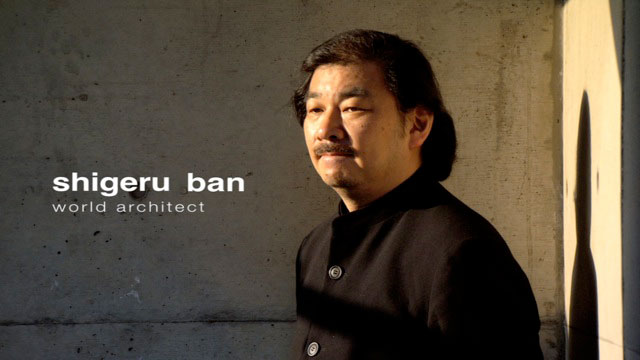
Shigeru Ban là một kiến trúc sư tài ba của Nhật Bản và thế giới
Pritzker Award là giải thưởng lấy tên từ dòng họ Pritzker, hiện sở hữu chuỗi khách sạn Hyatt trên khắp thế giới. Từ năm 1922, giải thưởng này đã trao cho các thành tựu về Khoa học, Y tế, Văn hóa, Giáo dục. Đến năm 1978, khi thiết kế khách sạn Hyatt tại Chicago trở thành biểu tượng về kiến trúc, dòng họ này đã có thêm giải thưởng Pritzker dành cho các công trình kiến trúc. Người đoạt giải thưởng Pritzker Kiến trúc nhận được một khoản tiền là 100.000 USD và một giấy chứng nhận chính thức.
KTS Shigeru Ban sinh tại Tokyo, Nhật Bản. Năm 1977 – 1980, ông học kiến trúc tại Học viện Kiến trúc Nam California, Mỹ, sau đó theo học trường kiến trúc Cooper Union. Năm 1982 – 1983, ông bắt đầu sự nghiệp tại xưởng kiến trúc của KTS. Arata Isozaki; năm 1985, thành lập văn phòng kiến trúc của riêng mình tại Tokyo. Hiện tại, ông có thêm 2 văn phòng thiết kế đặt tại New York và Paris.
KTS Shigeru Ban là một kiến trúc sư bậc thầy về sự sáng tạo. Ông từng thiết kế nhiều thể loại công trình, như nhà ở, bảo tàng, triển lãm, hội nghị, nhà hát, văn phòng… Con đường thiết kế ông theo đuổi là kiến trúc bền vững và cấu trúc vật liệu. Trong 20 qua, ông đã thiết kế nhiều công trình, từ quy mô lớn và chất lượng cao đến xây dựng các không gian sống cho những vùng bị tàn phá do thiên tai…
KTS Shigeru Ban có quan điểm thiết kế theo hướng sinh thái. Các công trình của ông đều có chi phí xây dựng thấp, vật liệu dễ tìm và có thể tái sử dụng. Trong nhiều thiết kế kiến trúc, ông không chạy theo việc tạo nên những thứ mới mẻ mà thiên về sử dụng các chất liệu có sẵn. Đó là kết quả của quá trình nghiên cứu cách sử dụng vật liệu tự nhiên và tái chế như: tre, gỗ, vải, vật liệu tổng hợp, nhựa tái chế và đặc biệt là giấy và bìa các-tông. Đây là những vật liệu dễ kiếm ở mọi nơi, dễ vận chuyển, chống lửa và chống nước.
KTS Shigeru Ban phát triển kiến trúc theo hướng mở với các kiến thức liên ngành, không chỉ sáng tạo các công trình, không gian mới mà còn kết hợp hài hòa giữa nhu cầu, kinh tế, tính bản địa và văn hóa.
Ông nổi tiếng thế giới bởi các sáng tạo với giấy và các ống bằng bìa các-tông như một vật liệu xây dựng, là kiến trúc sư đầu tiên ở Nhật Bản xây dựng một tòa nhà chủ yếu bằng giấy. Sử dụng những vật liệu không bình thường trong xây dựng như giấy, KTS Shigeru Ban đã mở rộng và định nghĩa lại giới hạn về vật liệu mới trong kiến trúc hiện đại. Ông đã tạo ra một biểu tượng mới của kiến trúc tối giản.
Sau đây là một số công trình kiến trúc nổi bật của Shigeru Ban:
Nhà thờ Christchurch Cathedral tại New Zealand
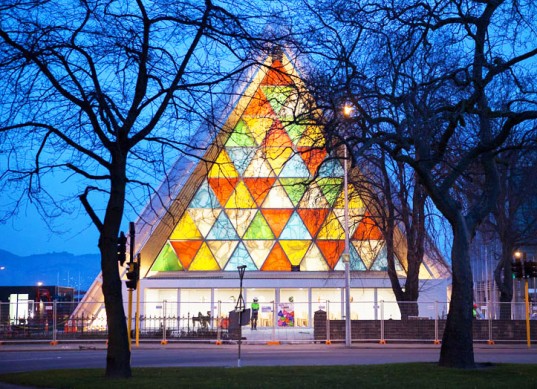
KTS Shigeru Ban đã thiết kế công trình nhà thờ Christchurch Cathedral tuyệt đẹp tại New Zealand. Đây là công trình được xây dựng bằng 98 ống bìa các-tông với những cửa sổ bằng kính tam giác màu sắc sặc sỡ để dành tặng cho cộng đồng gặp thảm họa từ trận động đất tàn khốc năm 2011. Công trình có sức chứa lên tới 700 người và có tuổi thọ khoảng 50 năm.
Trung tâm Pompidou-Metz tại Pháp
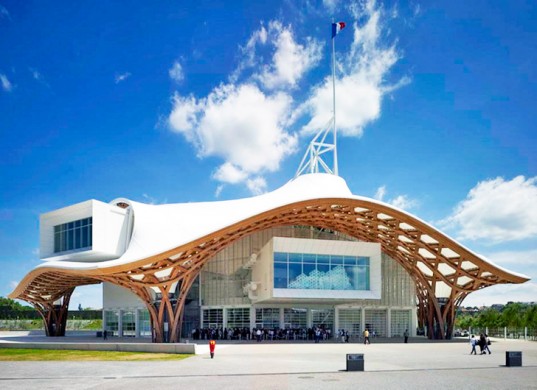
Các đường cong của Trung tâm Pompidou-Metz là một phần mở rộng của Trung tâm nghệ thuật Pompidou của Paris. Shigeru Ban đã lấy cảm hứng từ cấu trúc uốn lượn hình thoi của một chiếc mũ cổ Trung Quốc mà ông đã bắt gặp ở đâu đó để tạo ra cấu trúc mái uốn lượn mềm mại và tạo ra sự độc đáo của công trình.
Cầu Cardboard trên sông Gardon, Pháp
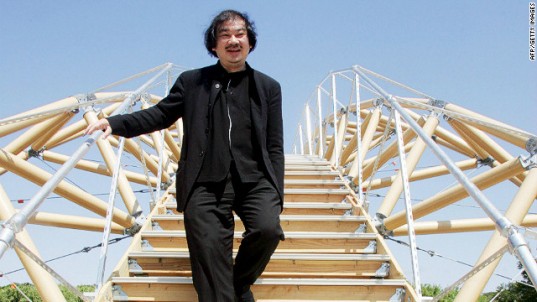
Trong một cuộc triển lãm về sức mạnh của cấu trúc các-tông, Shigeru Ban đã một lần nữa thể hiện khả năng qua việc chuyển đổi các ống các-tông và tái chế hỗn hợp giấy – nhựa làm vật liệu cho một cây cầu bắc qua sông Gardon ở miền Nam nước Pháp. Đó là kiệt tác được tạo ra từ 281 ống các tông, đủ sức tải 20 người đi trên cầu cùng một lúc.
Nhà tạm Onagawa tại Nhật Bản
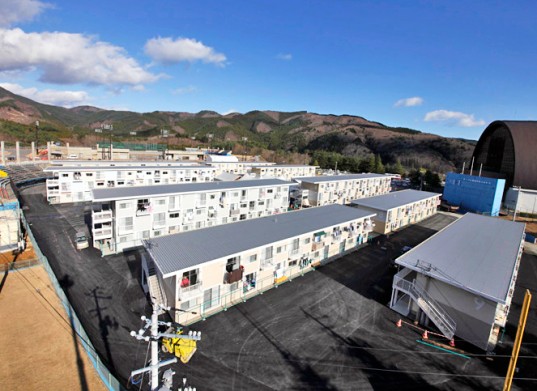
Khi trận động đất tàn phá thị trấn Onagawa của Nhật Bản năm 2011, Shigeru Ban đã nhanh chóng thiết kế và lắp đặt những ngôi nhà cứu trợ thiên tai, được xây dựng từ các ống bìa giấy và các container. Các ngôi nhà này có thiết kế gọn nhẹ, giá cả phải chăng, dễ làm sạch sẽ, cung cấp kịp thời chỗ ở cho các nạn nhân động đất, đồng thời nâng cao tinh thần nhân văn trong thiết kế này.
Dự án hậu sóng thần Kirinda ở Kirinda, Sri Lanka
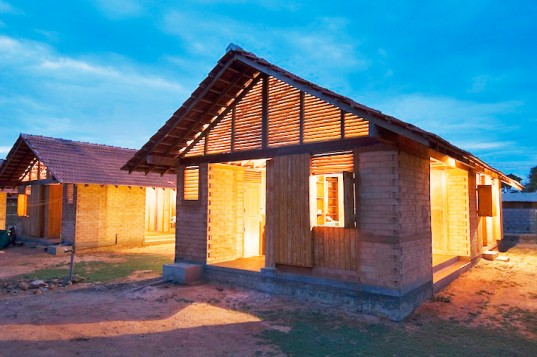
Năm 2004, Shigeru Ban đã thiết kế 100 ngôi nhà cho dân làng Sri Lanka chịu ảnh hưởng của trận sóng thần Kirinda. Những ngôi nhà được xây dựng từ gạch đất nung và gỗ cây cao su có nguồn gốc từ địa phương.
Biệt thự tại Sengokubara ở Kanagawa, Nhật Bản
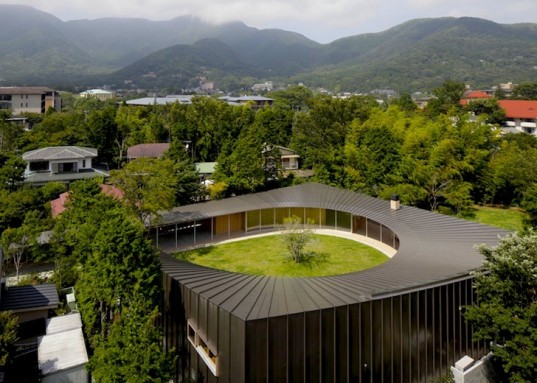
Biệt thự tại Sengokubara là một ngôi nhà bằng gỗ nhỏ gọn, bao quanh một sân hình giọt nước. Cũng giống như các công trình kiến trúc khác của mình, Shigeru Ban đã tạo ra một quá trình liền mạch giữa các không gian nội thất và bên ngoài.
Nhà thờ giấy tại Kobe, Nhật Bản
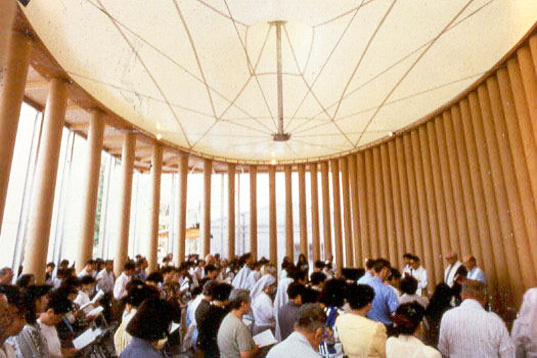
Sau khi trận động đất lớn Hanshin năm 1995 phá hủy nhà thờ Takatori tại Kobe, Shigeru Ban đã thiết kế một nhà thờ tạm thời từ các ống giấy. Mười năm sau, nhà thờ giấy này được trao tặng lại cho một cộng đồng Công giáo tại Đài Loan.